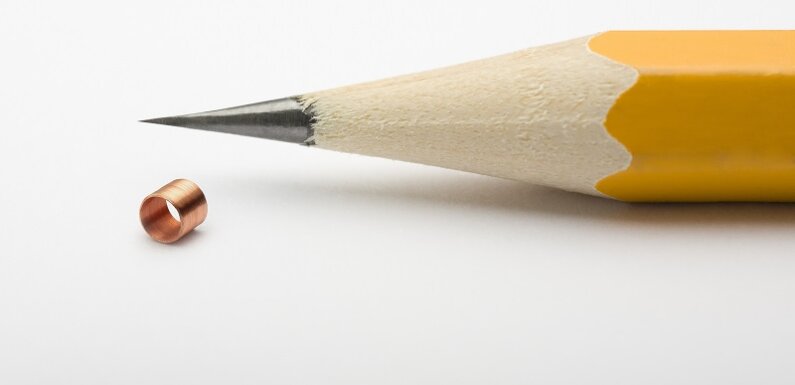
What is a micro-coil?
Micro-coils are basically electromagnetic coils and in order to produce micro-coils, the main thing you need is a conductor like a wire that can conduct electricity. The function of a micro coil is very similar to a normal coil but the main difference lies in its minimalistic size.
In fact, in most cases without the help of a microscope or a magnifying glass, you will not see them in open eyes. The main things that heavily impact the shape and size of miniature coils are resistance, inductance, and the potency of the required magnetic field.
Electromagnetic micro coils mainly function in those cases where electricity acts together with the magnetic field. Some examples of such cases include electromagnets, medical sensors, inductors, transformers, etc.
Micro-coil winding challenges:
A big challenge that designers and coil makers face is complying with the physical size requirements as per their projected utilization. And in some cases, designers are making micro coils that are even smaller than the eye of a needle.
Another big issue that may arise in the micro coil winding process is adjoining the super-tiny wires. You cannot join ultra-slim wires with traditional heat-based soldering methods or machines due to problems like oxidation, heat injury, bad connectivity, etc.
Moreover, the micro-coil winding process with ultra-fine wires is also very risky and delicate. Designers have to be very careful regarding many factors.
Some of them are:
i) Breaking point between the wire and the insulation.
ii) Strong winding spaces
iii) Wires which are not totally straight.
iv) High speed.
The solution to these challenges:
The latest technology that can really help to avoid these perils is thermo-pressure bonding technology. Using this innovative technique, backed by the latest technology, you can connect two super-tiny wires of the same or different sizes. You can even join two ultra-fine wires of different materials by this technology. Miniature coils prepared using thermo-pressure bonding technology are way more stronger and durable.
In addition, they are also stain and corrosion free, which makes them even more efficient. Thermo-pressure bonding technology is equally appropriate for long-life and disposable products. That is why designers use thermo-pressure bonding technology to prepare a miniature coil in order to place it inside permanent medical implants.
Use of micro-coils in the medical sector:
The use of micro-coils is gradually increasing in the medical sector. It provides great help in wireless diagnostics. It also helps in monitoring and controlling the process of active implants such as pacemakers, pain control devices, deep brain stimulation components, etc. In dental and orthopedic treatment, doctors use pulsed electromagnets and they also contain micro-coils. Its usage ranges around a diverse area including delivering a drug to a specific location within the body, targeted radiation catheters, implanted markers, etc.
Final thoughts:
The introduction of miniature coils has opened a wide range of opportunities in front of coil makers. In fact, industry experts strongly believe that its usage will further increase in the future.

